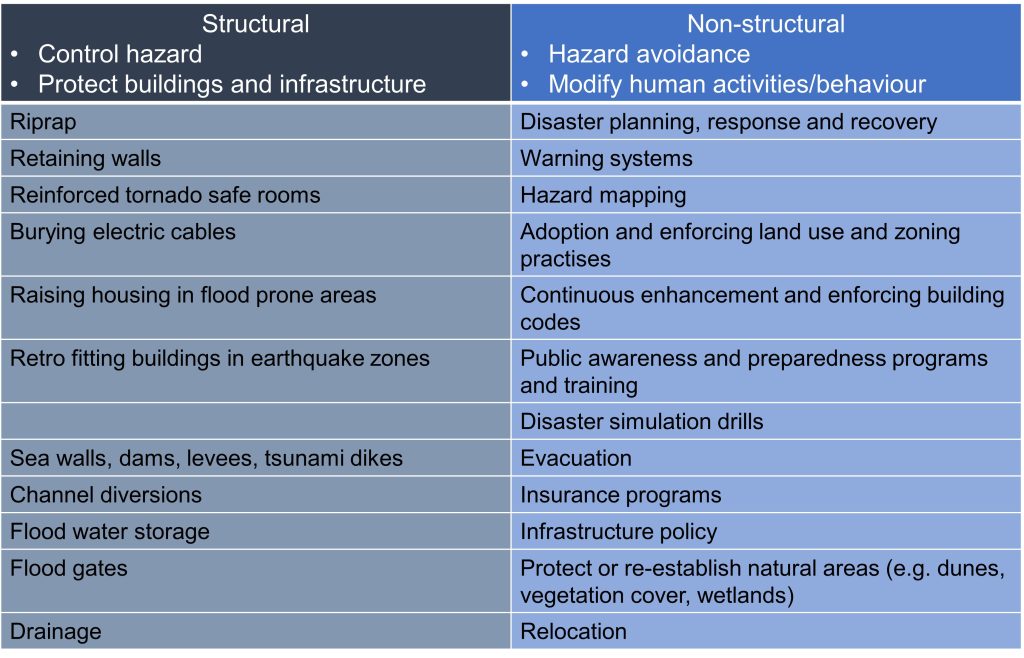3 1.3 Mitigation
Laura J. Brown
Mitigation
Hazard mitigation measures are actions taken before an event that prevents or helps reduce the impacts or risks of a disaster. Mitigation strategies require a good understanding of the hazard and disaster risk to be effective. Mitigation approaches are often classified into structural solutions (e.g. flood dikes) or non-structural solutions (e.g. land use zoning). Structural mitigation involves construction to control hazards or build safety features that protect buildings and infrastructure. This approach to mitigation utilizes engineering techniques or technology to achieve hazard resistance. Common examples of structural mitigation include dams to prevent flooding, riprap to control erosion, retaining walls to prevent landslides and retrofitting buildings with earthquake-resistant support. Non-structural mitigation strategies utilize education, knowledge, policies and laws to avoid hazard impacts or modify human activities and behaviour. Common examples of non-structural mitigation include bylaws prohibiting building on floodplains, evacuation before a hazardous event, and public awareness training and education.

Structural mitigations can provide a false sense of safety, are very expensive and require ongoing maintenance costs. If these structures are poorly maintained or engineered improperly, their failure can result in disaster. An excellent example of structural mitigation failure that resulted in a disaster was when the levees protecting New Orleans breached and broke following Hurricane Katrina in 2005.
Non-structural approaches are less expensive to implement and keep up to date with current understandings of the risks associated with natural hazards. One aspect of this mitigation approach involves preserving environmental resources that protect and reduce natural hazard impact. For example, wetlands and dunes provide coastal flood protection. Warning systems alert the public of a hazard. For example, Environment Canada issues Alert bulletins for severe weather. A watch is issued when the conditions for an event are right. If server thunderstorms are forecast to be strong enough for the development of a tornado. Alternatively, if an earthquake with a magnitude of 7.5 strikes somewhere in the ocean, a tsunami watch may be issued because it was strong enough to generate one. However, a watch does not necessarily mean that it will occur. A warning is sent to the areas that could be impacted if a tornado is spotted on the ground or an ocean sensor records an approaching tsunami.

